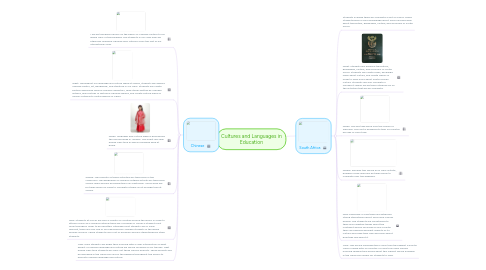Cultures and Languages in Education
作者:Emily Anderson

1. Chinese
1.1. I will be teaching a lesson on the basics of Chinese Culture to my whole class of third graders. The students in my class who are ethnically mainland Chinese face criticism from the rest of my international class.
1.2. What: Throughout our language and culture week at school, students will explore Chinese poetry, art, geography, and literature in our class. Students will create posters examining various Chinese characters, read stories written by Chinese authors, diary entries of historical Chinese figures, and create culture maps of various clothing to match regions in China.
1.3. When: Language and Culture week is held during the second week in January. This event will span during class time as well as finishing work at home.
1.4. Where: The majority of these activities will take place in the classroom. The geography of Chinese clothing activity will take place school-wide and will be presented in an auditorium. Some work will be taken home on iPads to complete if there is not enough time at school.
1.5. Why: Students at SHSID are from a variety of counties around the world. In order to attend SHSID as a Chinese national there are a number of hoops a student must jump through in order to be admitted. Although most students are of Asian descent, there are only five or six mainland born Chinese students in the whole primary division. These students face a lot of pressure and are stereotyped by other students.
1.6. How: Daily students will begin their morning with a clear introduction of what aspect of Chinese language and culture we will be focusing on for the day. Next during class time students will carry out these various projects. These projects will be displayed in the classroom and in the hallways throughout the school to promote Chinese language and culture.
2. South Africa
2.1. Students in grade three will complete a unit on Africa. These students have no prior knowledge about Africa and will learn about the history, geography, culture, and economy of South Africa.
2.2. What: Students will examine the history, geography, culture, and economy of South Africa. Students will create maps, exchange ideas about culture, and create videos in order to learn more about South African culture. Students will also complete a "passport" which will be their notebook for all the activities that we will complete.
2.3. When: This will take place over the course of February. This unit is designed to take 40 minutes per day of class time.
2.4. Where: Primarily this will be an in class activity, however some work will be taken home to complete over the weekend.
2.5. Why: Especially in Asia there are extremely strong stereotypes about Africa and African people. The students are conditioned to think only negative things about the continent and by focusing on one country they can examine different aspects of its culture and make their own decisions about how they feel about it.
2.6. How: This will be implemented in class time throughout a month. Twice a week with 40 minutes of class time used. During morning reading time books about this subject will be available in the classroom library for students to read.


